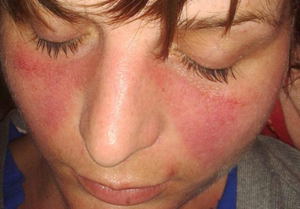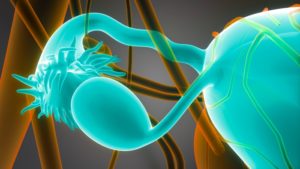Dermatomyositis Samples
Bay Biosciences provides high quality, clinical grade bio-samples, biopsy tissue samples, FFPE tissue blocks, serum (Serum), plasma and peripheral blood mononuclear cells (PBMC) bio-fluid samples from patients diagnosed with Dermatomyositis.
Moreover, the serum, plasma and PBMCs are processed from patient’s peripheral whole-blood using customized processing protocols.
Furthermore, the serum, plasma and PBMC specimens are processed from dermatomyositis patient’s peripheral whole-blood using customized collection and processing protocols.
In addition, the dermatomyositis tissue and matched biofluid samples are collected from unique patients diagnosed with dermatomyositis. Furthermore, the samples and are provided to a valued pharmaceutical customer for research, discovery and drug development.
Dermatomyositis Overview
Dermatomyositis is a rare inflammatory autoimmune disease, a condition that causes a distinctive skin rash and muscle weakness. Symptoms can include, for example, a red skin rash around the eyelids, red bumps around the joints, and muscle weakness in the arms and legs. Moreover, muscle weakness gets worse over time and can lead to stiff joints and muscle wasting.

Dermatomyositis Symptoms
The signs and symptoms of dermatomyositis can appear suddenly. However, they may also develop gradually over time. Furthermore, these features may be different from person to person. In fact, some people may have more symptoms than others, and symptoms can range from mild to severe. The most common signs and symptoms include:
- Skin changes- Specifically, a violet-colored or dusky red rash develops, most commonly on the face and eyelids, as well as on the knuckles, elbows, knees, chest, and back. Notably, the rash, which can be itchy and painful, is often the first sign of dermatomyositis.
- Muscle weakness-Additionally, progressive muscle weakness involves the muscles closest to the trunk, such as those in the hips, thighs, shoulders, upper arms, and neck. Importantly, the weakness affects both the left and right sides of the body and tends to gradually worsen.
Causes of Dermatomyositis
The cause of dermatomyositis is unknown; however, the disease has much in common with autoimmune disorders, in which the immune system mistakenly attacks your body tissues. Additionally, genetic and environmental factors also might play a role. Specifically, environmental factors could include viral infections, sun exposure, certain medications, and smoking.
Dermatomyositis Complications
Furthermore, complications of dermatomyositis include:
- Difficulty swallowing—when the muscles in the esophagus are affected, dermatomyositis patients can have problems swallowing; consequently, this can cause weight loss and malnutrition.
- Aspiration pneumonia—similarly, difficulty in swallowing can also cause dermatomyositis patients to breathe food or liquids, including saliva, into their own lungs.
- Breathing problems**—if the condition affects the chest muscles, the dermatomyositis patients might have breathing problems, such as shortness of breath.
- Calcium deposits—finally, these can occur in the muscles, skin, and connective tissues as the dermatomyositis disease progresses. Notably, these deposits are more common in children with dermatomyositis and develop earlier in the course of the disease.
Dermatomyositis Associated Conditions
Dermatomyositis might cause other conditions which can put patients at higher risk of developing them, including:
- Raynaud’s Phenomenon- This condition causes the fingers, toes, cheeks, nose and ears to turn pale when exposed to cold temperatures.
- Other connective tissue diseases- Other conditions such as lupus, rheumatoid arthritis, scleroderma and Sjogren’s syndrome can occur with dermatomyositis.
- Cardiovascular disease. Dermatomyositis can cause heart muscle inflammation. In some dermatomyositis patients, congestive heart failure and heart rhythm problems develop.
- Lung disease. Interstitial lung disease can occur with dermatomyositis. Interstitial lung disease refers to a group of disorders that cause scarring of lung tissue, making the lungs stiff and inelastic. Signs include a dry cough and shortness of breath.
- Cancer– Chronic Dermatomyositis in adult patients has been linked to an increased likelihood of developing cancer, particularly ovarian cancer in women. Risk of cancer appears to level off three years or so after a diagnosis of dermatomyositis.

Detailed clinical data, elevated levels of antibodies, serology, biomarkers, Jo-1, MDA5, TIF1γ, Mi2, PL-7, PL-12, KS, EJ, genetic info, muscle biopsy tissue, pathology annotations, associated with the Dermatomyositis patient’s specimens is provided to a valued customer for drug discovery, development and research. The Dermatomyositis disease PBMC, sera (serum) and plasma are processed from patients peripheral blood using customized processing protocols provided by the researcher.
Biospecimens
Bay Biosciences is a global leader in providing researchers with high quality, clinical grade, fully characterized human tissue samples, bio-specimens, and human bio-fluid collections.
Moreover, human biospecimens are available including tumor tissue, serum, plasma and PBMC Samples from most other therapeutic areas.
Furthermore, Bay Biosciences maintains and manages its own biorepository, the human tissue bank (biobank) consisting of thousands of diseased samples (specimens) and likewise normal healthy donors for controls. Additionally, available in all formats and types.
In fact, our biobank procures and stores fully consented, de-identified and institutional review boards (IRB) approved human tissue samples, human biofluids such as serum samples, plasma samples from various diseases and matched controls.
Also, all our human tissue collections, human biospecimens and human biofluids are provided with detailed, samples associated patient’s clinical data.
In fact, this critical patient’s clinical data includes information relating to their past and current disease, treatment history, lifestyle choices, biomarkers, and genetic information.
Additionally, researchers find the patient’s data associated with the human biospecimens extremely valuable and use it to help identify new effective treatments (drug discovery & development) in oncology, as well as in other therapeutic areas and diseases.
Bay Biosciences banks wide variety of human tissue samples and human biological samples, including fresh frozen human biospecimens cryogenically preserved at – 80°C.
For example fresh frozen tissue samples, tumor tissue samples, formalin-fixed paraffin-embedded (FFPE), tissue slides, with matching human bio-fluids, whole blood and blood-derived products such as human serum, human plasma and human PBMCs.
Bay Biosciences is a global leader in collecting and providing human tissue samples according to the specified requirements and customized, tailor-made collection protocols.
Please contact us anytime to discuss your special research projects and customized human tissue sample requirements.
Types of Biospecimens
Bay Biosciences provides human tissue samples (human specimens) and human biofluids from diseased and normal healthy donors which includes:
- Peripheral whole-blood
- Amniotic fluid
- Bronchoalveolar lavage fluid (BAL)
- Sputum
- Pleural effusion
- Cerebrospinal fluid (CSF)
- Serum (sera)
- Plasma
- Peripheral blood mononuclear cells (PBMC)
- Saliva
- Buffy coat
- Urine
- Stool samples
- Aqueous humor
- Vitreous humor
- Kidney stones (renal calculi)
- Other bodily fluids from most diseases including cancer.
Moreover, we can also procure most human biospecimens and human biofluids, special collections and requests for human samples that are difficult to find. All our human tissue samples and human biofluids are procured through IRB-approved clinical protocols and procedures.
In addition to the standard processing protocols, Bay Biosciences can also provide human biofluids such as human plasma, human serum, and human PBMCs bio-fluid samples using custom processing protocols. you buy donor-specific collections in higher volumes and specified sample aliquots from us in multiple format and sets.
Bay Biosciences also provides human biospecimens from normal healthy donors; volunteers, for controls and clinical research, Contact us Now.
- 日本のお客様は、ベイバイオサイエンスジャパンBay Biosciences Japanまたはhttp://baybiosciences-jp.com/contact/までご連絡ください。
